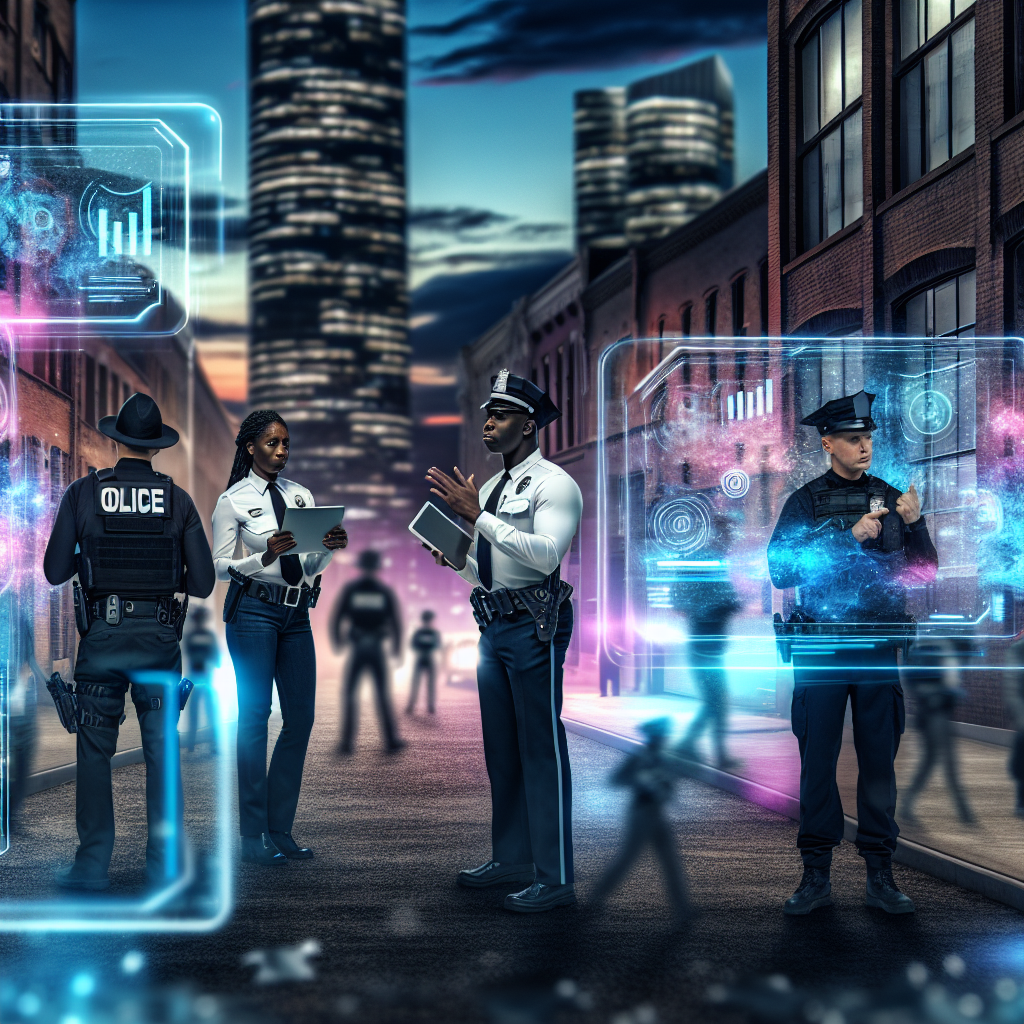# AI in Crime Prevention: Police Use Technology to Combat Gun Violence
## Introduction
Gun violence remains a significant societal problem, with devastating impacts on communities worldwide. As cities grapple with increasing rates of violence, there is a growing need for innovative solutions to enhance public safety. Artificial Intelligence (AI) and technology play a pivotal role in law enforcement today, offering new tools and strategies to prevent and respond to criminal activities effectively. This blog post explores the potential of AI in crime prevention, focusing on gun violence and the transformative power it holds for law enforcement agencies.
## Understanding AI in Law Enforcement
Artificial Intelligence refers to the capability of a machine to imitate intelligent human behavior. In law enforcement, AI applications range from data analysis and predictive policing to sophisticated surveillance and identification systems. Historically, technological advancements have consistently reshaped how policing is executed, from the introduction of communication technologies to the recent rise of AI-driven systems. As public safety demands grow, the incorporation of AI technologies becomes imperative to stay a step ahead of criminal activities.
## Current Technologies Used in Crime Prevention
In recent years, several AI-driven technologies have been deployed in crime prevention. Predictive policing uses data and algorithms to predict where crimes might occur, enabling law enforcement to allocate resources more effectively. Surveillance systems powered by AI, including facial recognition and gunshot detection systems, enhance situational awareness and response capabilities. Additionally, Geographic Information Systems (GIS) aid in crime mapping, providing insights into crime patterns and hotspots.
## Specific Examples Related to Gun Violence
Certain cities have successfully integrated AI technologies to address gun violence. For instance, Chicago employs AI to analyze vast amounts of data, identifying patterns and potential outbreaks of violence. New York City has introduced real-time crime analysis centers, leveraging AI for rapid data processing and response coordination. By combining community engagement with AI insights, these cities have implemented effective prevention strategies, resulting in notable decreases in gun-related incidents.
## Benefits of AI in Combating Gun Violence
The benefits of employing AI in combating gun violence are manifold. Firstly, enhanced data analysis enables more efficient resource allocation, allowing law enforcement to focus efforts where they're most needed. AI improves situational awareness, giving agencies the ability to respond faster and more effectively to incidents. Overall, the integration of AI holds the potential to reduce crime rates, making communities safer and augmenting public trust in law enforcement efforts.
## Challenges and Limitations
Despite the promise AI holds, there are challenges and limitations to its use in crime prevention. Technical limitations exist, as current AI technologies may not be fully developed or accurate in every scenario. There's also the risk of over-reliance on technology, which could lead to misjudgments in complex situations. Furthermore, data quality and interoperability issues among various systems present hurdles that need addressing to maximize AI's effectiveness.
## Ethical and Privacy Concerns
The deployment of AI in law enforcement raises ethical and privacy concerns. Surveillance systems, while enhancing safety, may infringe on civil liberties, sparking debate on privacy rights. Additionally, AI algorithms can be susceptible to biases, which could lead to discriminatory practices. Legal frameworks and policies are essential to ensure responsible AI use, protecting citizens' rights while enabling effective policing.
## Conclusion
AI represents a transformative opportunity in law enforcement, poised to revolutionize how gun violence and other crimes are prevented and addressed. As we advance, it is crucial to balance innovation with ethical considerations, ensuring AI technologies enhance safety without compromising individual freedoms. Collaborative efforts between law enforcement, tech developers, and communities will be essential to harness AI's full potential for a safer future.
## Sample Code Placement: Implementing Predictive Policing
To demonstrate the practical application of AI in crime prevention, we explore a machine learning approach using a Random Forest classifier to predict crime hotspots based on historical data. This model considers various features, such as spatial, temporal, and demographic data, to identify high-probability crime areas. Below is a code snippet that outlines this approach:
python
Crime Hotspot Prediction using Machine Learning
import numpy as np
import pandas as pd
import matplotlib.pyplot as plt
from sklearn.modelselection import traintestsplit
from sklearn.ensemble import RandomForestClassifier
from sklearn.metrics import classificationreport, confusion_matrix
from sklearn.preprocessing import StandardScaler
import folium
from folium.plugins import HeatMap
Sample function to load and preprocess crime data
def loadcrimedata(filepath):
df = pd.readcsv(filepath)
df[‘datetime’] = pd.todatetime(df[‘date’] + ‘ ‘ + df[‘time’])
df[‘hour’] = df[‘datetime’].dt.hour
df[‘dayofweek’] = df[‘datetime’].dt.dayofweek
df[‘month’] = df[‘datetime’].dt.month
df = pd.getdummies(df, columns=[‘crimetype’])
return df
Main prediction function
def trainhotspotmodel(features, labels):
Xtrain, Xtest, ytrain, ytest = traintestsplit(features, labels, testsize=0.25, randomstate=42)
scaler = StandardScaler()
Xtrainscaled = scaler.fittransform(Xtrain)
Xtestscaled = scaler.transform(X_test)
model = RandomForestClassifier(n_estimators=100, max_depth=10, min_samples_split=10, random_state=42)
model.fit(X_train_scaled, y_train)
y_pred = model.predict(X_test_scaled)
print("Model Performance:")
print(classification_report(y_test, y_pred))
return model, scaler
Predicts hotspots
def visualizehotspots(latlist, lonlist, probabilities, cityname):
m = folium.Map(location=[np.mean(latlist), np.mean(lonlist)], zoomstart=12, tiles=’CartoDB positron’)
heatdata = [[lat, lon, prob] for lat, lon, prob in zip(latlist, lonlist, probabilities)]
HeatMap(heatdata, radius=15, maxzoom=13).addto(m)
m.save(f'{cityname}crimehotspots.html’)
return m
This code provides a framework for applying predictive policing techniques, allowing law enforcement to focus on prevention through data-driven insights.
## Sources & Links
- [Gun Detection & Crime Prevention AI Solution | IREX](https://irex.ai/features/gun-detection)
- [Beyond Gunshot Detection - VOLT AI](https://resources.volt.ai/blog/gunshot-detection)
- [US and UAE Finalize Technology Framework Agreement](https://www.commerce.gov/news/press-releases/2025/05/uae/us-framework-advanced-technology-cooperation)
- [Top Agriculture Technology Trends for 2023](https://iotbusinessnews.com/2024/04/30/04049-top-6-agriculture-technology-trends-for-2023-and-beyond/)





